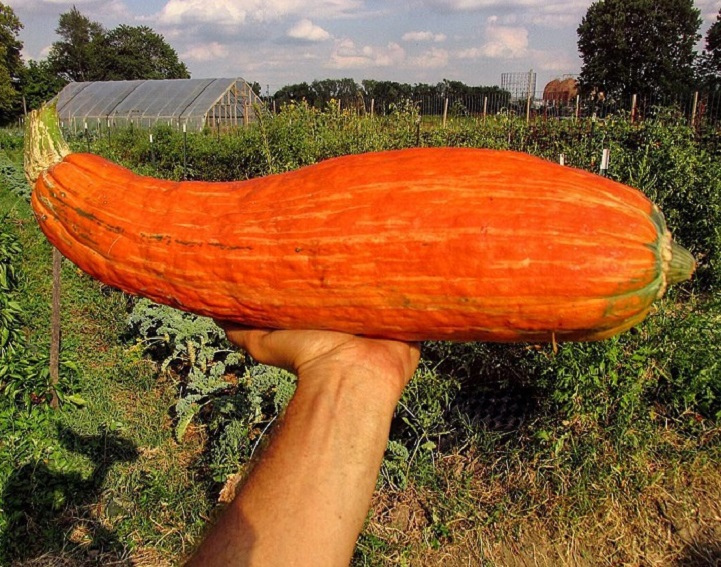About an hour’s drive northwest of Green Bay, Wisconsin in the land of the Minominee Tribe, a tiny clay pot was discovered by archaeologists. The clay pot was nothing out of the ordinary, but its contents revealed a gift that will live on for generations to come. The 800 year old seeds of an extinct squash lay inside. The whimsy of this story is captivating, unfortunately it is most likely untrue.
The variety of squash reported in this tale comes from the saved seed of members of the Miami Nation of Indiana. The seeds were gifted to David Wrone, an emeritus professor at the University of Wisconsin. Although the seeds have not been stored underground in a clay pot for 800 years, they have been grown and saved by the Miami Nation for more than 5,000 years.
The squash named Gete-okosomin (meaning “Big Old Squash” in the Menominee language) is a variety of winter squash (Curcubita maxima) that can grow up to 30 pounds. It has been reported to have a much thinner rind than most winter squash. The most common preparation by the Miami people was to cut the squash in strips, allow it to dry naturally, and add desired amount to soups and stews. I would not recommend this preparation method for the humid climate of Florida.
Not only do these two stories of seed survival provoke an interest in gardening, they also bring up the question of the proper way to store and save seed. It is important that you choose to save seeds from open-pollinated varieties in order to save the traits of the parent plants. Most vegetable seeds can simply be washed, dried, and stored in a cool, dry space. However, the germination of tomato seeds can be increased by allowing them to ferment in water. For more detailed information on saving seeds, you may find this bulletin from The University of Maine helpful: Seed Saving for the Home Gardener.
- Gardening in the Panhandle LIVE! Program Summary: Pests of Florida Lawns and Landscape Plants - May 28, 2025
- Fun Facts About Ferns - April 30, 2025
- Gardening in the Panhandle LIVE! Program Summary: Freeze Friendly Foliage Plants - April 30, 2025

